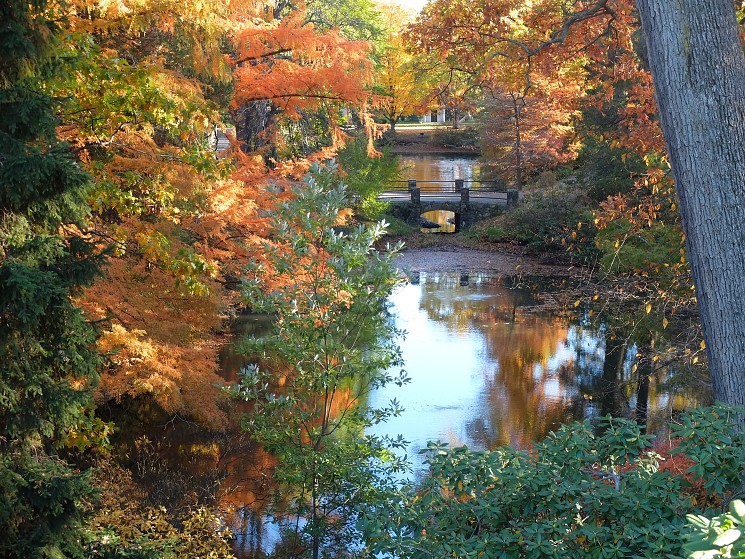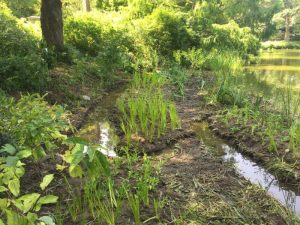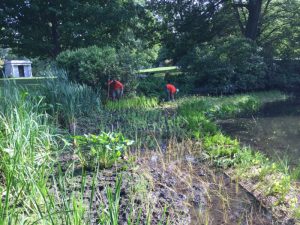Climate-Adaptive Emergent Zone Planting Project to Improve Aquatic Habitat Resiliency

Mount Auburn has three ponds and a vernal pool within its 175 acre, urban footprint. Each water body provides habitat important for wildlife health and success. Halcyon Lake provides breeding ground for the American Toad (Bufo americanus), which after being absent from the cemetery for more than three decades, has been successfully reintroduced. A healthy, breeding population of this native amphibian now exists at Mount Auburn. Auburn Lake supports a healthy population of the native Snapping Turtle (Chelydra serpentina). Willow Pond provides excellent fishing ground for the native Great Blue Heron (Ardea herodias). Lastly, the vernal pool at Consecration Dell provides breeding habitat for another native species, the Spotted Salamander (Ambystoma maculatum). Of course, habitat at each water body supports significantly more wildlife as well. Protection of habitat is an important piece of the cemetery’s institutional mission to be good stewards of the environment.

Channels and hillocks created to trial a climate-adaptive approach designed to mitigate the impact of drought and storm surges. Halcyon Lake.
In 2014, the Cambridge area suffered through periods of moderate to severe drought. These dry conditions worsened to prolonged, severe drought in 2015 and extended to extreme drought in 2016. Although the region recovered to normal precipitation levels in 2017, the effects of the drought impacted both flora and fauna. Drought stress increased our plant collections susceptibility to pests, disease, and winter damage. Habitat loss meant less cover, food, and breeding ground for wildlife. The aquatic habitat at Mount Auburn did not escape this dilemma. Emergent shelves along the shorelines of Halcyon and Auburn Lakes suffered through near complete loss of plant life. This desertification meant that birds, amphibians, reptiles, insects, and mammals lost much needed habitat.
In 2017, Mount Auburn partnered with SWCA of Amherst, MA to create a plan to restore aquatic habitat and reduce vulnerability to the warming climate impacts of drought and stronger stormflow. The emergent shelf at Halcyon Lake was designed to trial this climate-adaptive approach. Channels were dug into the existing shelf to direct storm water input to travel through the shelf before entering the main body of the lake. This will slow down the velocity of the storm water, which can be very damaging to habitat during increasingly more powerful rain events. The earth moved to create the channels was then used to build hillocks inside the emergent shelf. This restoration effort allows for changes in the plant selection to include plants that tolerate wet feet (temporarily submerged root systems) and can also tolerate dryer conditions. Therefore, in periods of inundation due to storms, or dry to drought conditions, wildlife will have habitat that provides cover, food, and breeding ground. The water bodies will be monitored closely moving forward to assess the success of the restoration efforts.

Leave a Reply